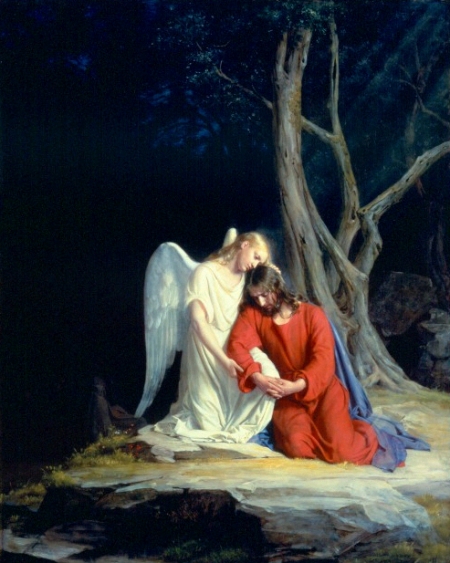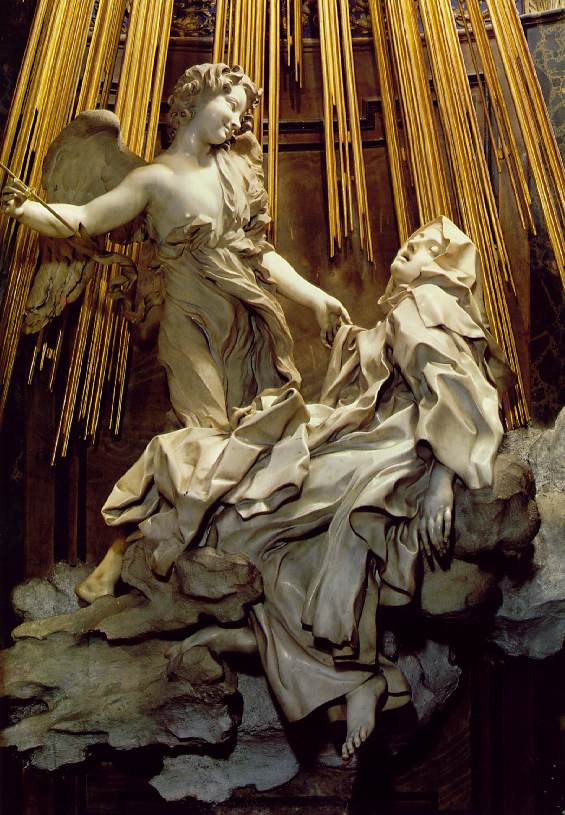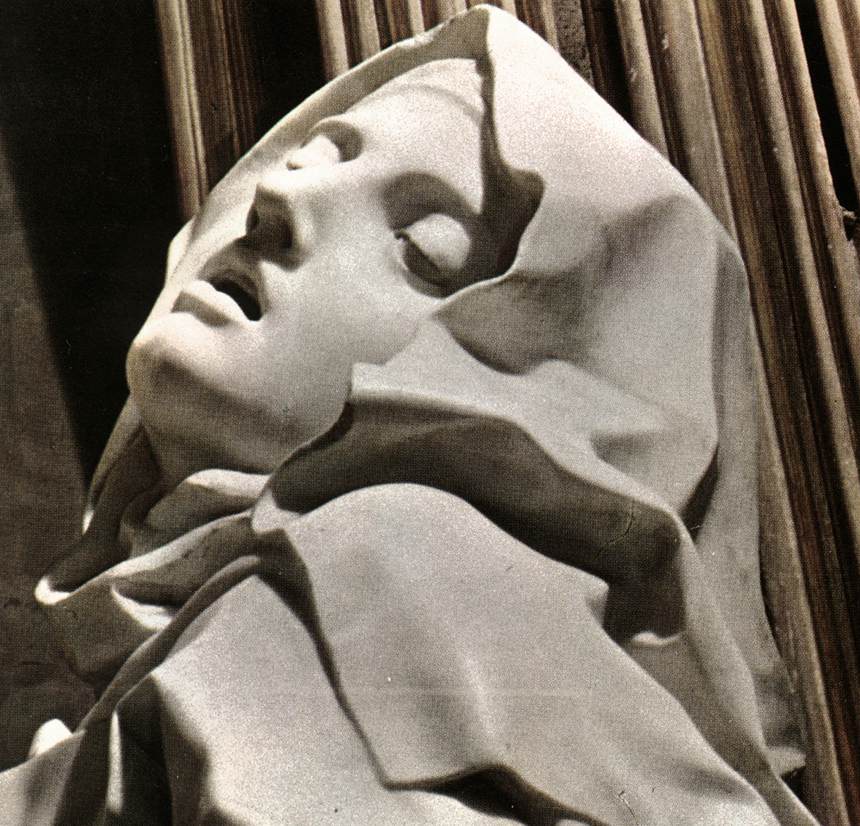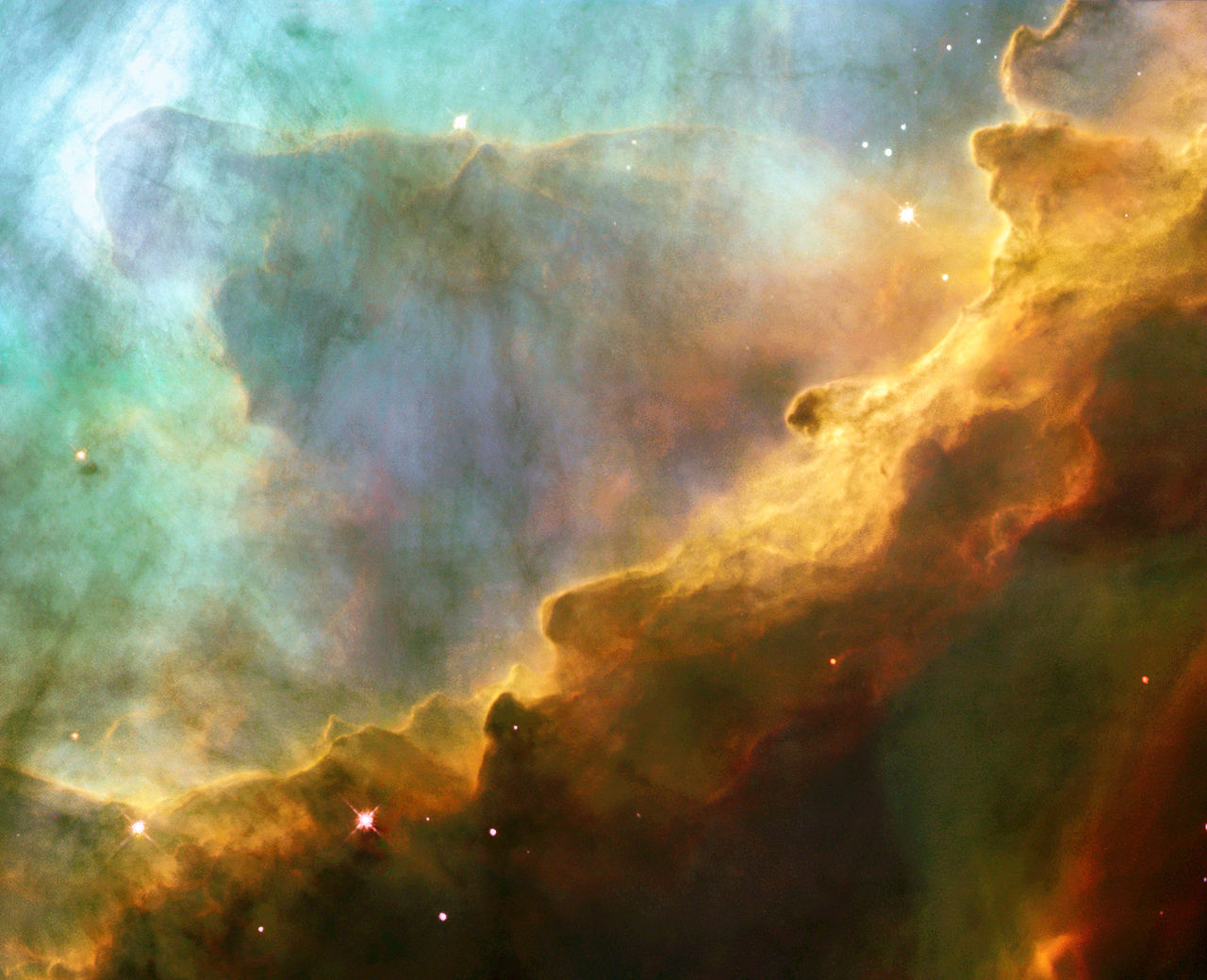Christ Consciousness
| Christ in Gethesemane, by Carl Bloch, 1850, National Historical Museum, Frederiksborg Castle, Denmark.
|
 |
|---|
The agony in the Garden of Gethsemane shows the humanity of Jesus and also the spiritual connection to suffering. We should not be afraid of this path. Expressing these emotions and feeling the tears are part of this experience. Christ is the Gateway to the Kingdom of Heaven and for us, relating to suffering of others may be a part of it.
The Ecstasy of St. Therese by Gian Lorenzo Bernini, 1650, marble statue, Cappella Cornaro, Santa Maria della Vittoria, Rome. |
 |
|---|---|
St. Teresa was a teacher and mystic and her life included action, pray and physical suffering. She was a Catholic Carmelite nun in the convent of the Incarnation at Avila, Spain in the 16 th century. Teresa was tormented by temptation, guilt and fear of God, but overcame it with pray and devotion. |
|
This intense emotion is captured dramatically in the sculpture by Bernini. Bernini was a Catholic during the end of the Renaissance and had his own spiritual journey to contend with. Art critics often commented on this statue’s sensual nature - mystical ecstasy and ecstasy of erotic love. |
 |
Teresa's book “The Way of Perfection”, was written as a guide in the practice of prayer for the nuns in her convent. She describes vocal prayer and mental prayer which appears to be recollection, concentration, contemplation, and meditation, and prayer of quiet which seems to be an altered state of consciousness that is an ecstatic union with God, rapture, elevation or flight of the spirit. She calls this a supernatural state. And she made great use and consolation of the Pater Noster - The Our Father prayer. Teresa’s writings tells of spiritual betrothal and fullness of union with God; indwelling presence of the trinity and bride of Jesus Christ in his humanity and divinity, Christ the Master.
St. Teresa of Avila was described as a mystic. There is often great misuse of the terms mystical and mysticism. The root word is from the Greek mysterion and mystikos and is the same for our word mystery. This originated in some ancient religions with secret initiations into the spiritual mysteries.
The purpose of the Next Reformation is not to change the feelings people have about spiritual matters. Those feelings about God and Christ are real. But rather, to suggest that the Peace Profound and Great Comforter of Christ is available to all, whether they know the name Jesus or not.
We should not be afraid of the suffering or to feel the empathy and pathos of Christ for humanity. The Next Reformation must consider the Mystical Nature of Christ. Christ Consciousness is the Son of man and the Son of God available for all humanity.
Christ as the Redeemer of Man, by William Blake, 1808, pen and watercolor, Museum of Fine Arts, Boston. |
 |
|---|
William Blake, an English poet and artist, was a mystic and this is evident in his illustrations. “Christ as the Redeemer of Man” appeared as an illustration in Milton’s Paradise Lost.
Mystic is not related to mythic, which is mythology, or magic, as is sometimes misused. The Next Reformation will objectively consider and use mysticism as the bridge between science and religion!
Now it is time for the Divine Feminine - the Holy Spirit - the Goddess !


